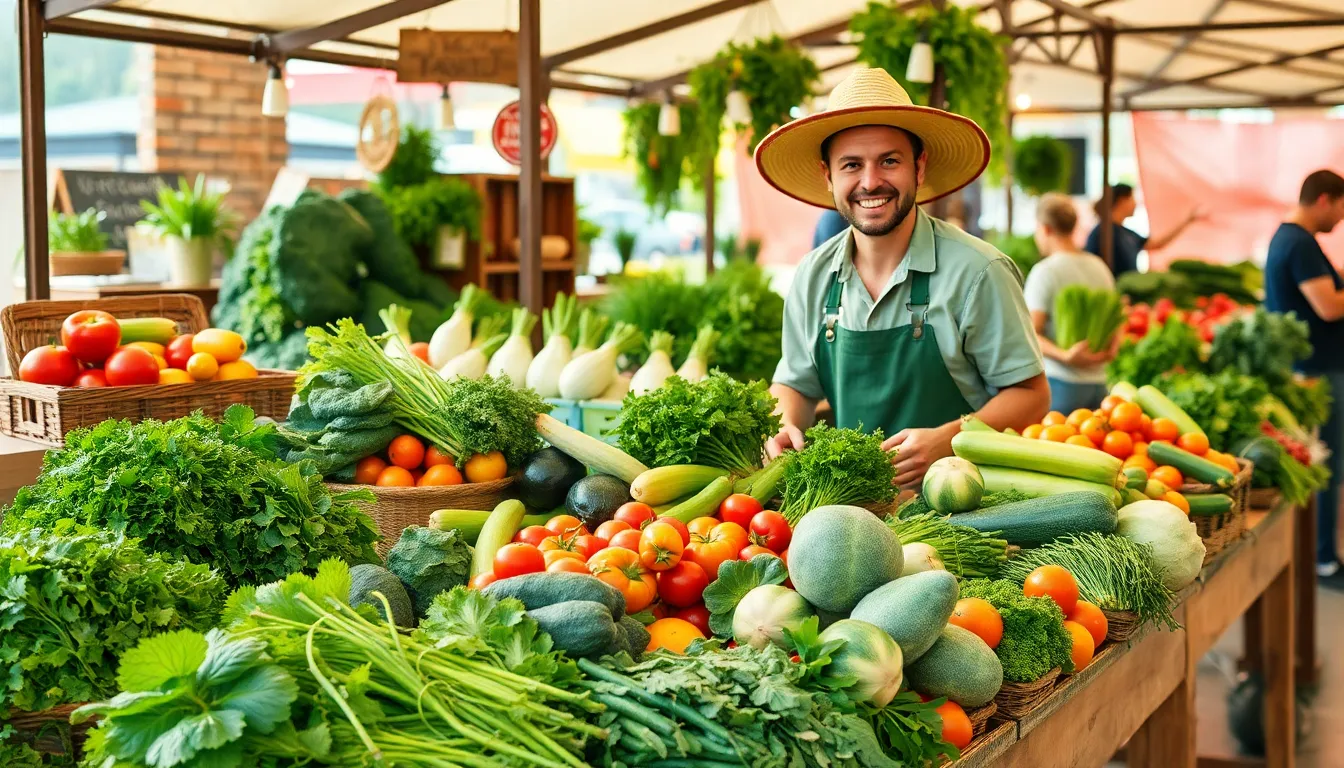In a world where food travels more than most people do, the charm of farm-to-table dining is hard to resist. Imagine biting into a juicy tomato that’s fresher than your morning coffee and knowing it didn’t take a road trip to get to your plate. Farm-to-table restaurants are like the superheroes of the culinary world, swooping in to save the day with locally sourced ingredients that burst with flavor.
Best Farm To Table Restaurants Near Me
Farm-to-table dining emphasizes the connection between agriculture and food consumption. This movement focuses on sourcing ingredients directly from local farms, ensuring freshness and quality. Many restaurants feature seasonal menus, adjusting offerings based on available produce. Customers often appreciate knowing the origin of their food, enhancing their dining experience.
Farm-to-table restaurants promote sustainability by supporting local farmers and reducing transportation emissions. Buying locally means restaurants can offer guests flavorful dishes made from ingredients harvested at their peak. Chefs actively collaborate with farmers, creating a sense of community between those who grow food and those who prepare it.
This movement also fosters an appreciation for seasonal eating. Diners learn to anticipate and enjoy ingredients as they come into season. As ingredients vary throughout the year, menus reflect this dynamism, leading to unique dining experiences that change with the seasons.
Beyond freshness, farm-to-table dining often aligns with ethical practices. Many consumers prefer to eat at restaurants that prioritize organic and environmentally friendly farming methods. These practices promote animal welfare and biodiversity, contributing to a healthier ecosystem.
Ultimately, the farm-to-table movement cultivates transparency in food sourcing, allowing consumers to make informed choices. The joy of savoring locally sourced dishes enhances the dining experience. Choosing a farm-to-table restaurant means engaging in a broader conversation about food, sustainability, and community.
Criteria for Evaluating Restaurants


Evaluating farm-to-table restaurants involves distinct criteria that highlight their commitment to quality and sustainability.
Locally Sourced Ingredients
Locally sourced ingredients form the backbone of farm-to-table restaurants. Restaurants that consistently highlight partnerships with nearby farms demonstrate a dedication to freshness. Chefs working with local farmers often select produce harvested within hours of preparation. This immediate access enhances both flavor and nutritional value. Ingredients like vegetables, fruits, and herbs sourced from local growers create vibrant dishes with rich taste. By emphasizing local sourcing, these establishments reduce transportation emissions and foster community connections. Customers value transparency, knowing exactly where their food originates. Ultimately, restaurants that prioritize local ingredients can create an authentic dining experience that resonates with their clientele.
Seasonal Menus
Seasonal menus provide another critical criterion for farm-to-table establishments. Restaurants that adapt their offerings according to what’s available showcase culinary creativity. Dishes change regularly, reflecting the natural rhythm of harvest cycles. Seasonal menus encourage diners to enjoy the best flavors at their peak, ensuring freshness in each bite. Ingredients like tomatoes in summer or squash in fall feature prominently in these menus, creating a direct link to the farming calendar. Seasonal dining not only highlights local produce but also supports sustainability by minimizing food waste. Establishments embracing seasonal menus usually promote a deep appreciation for the culinary arts and connect diners to the rich bounty of the surrounding region.
Top Farm to Table Restaurants Near Me
Farm-to-table restaurants provide a unique dining experience focused on fresh, locally sourced ingredients. Many options exist, showcasing delicious and sustainable menus.
Restaurant 1: Description and Highlights
Green Plate features a diverse array of seasonal dishes that highlight ingredients from nearby farms. The menu includes handcrafted pasta and vibrant salads, ensuring each meal bursts with flavor. Diners appreciate the open kitchen that allows a glimpse into the culinary process. Local partnerships ensure the freshest produce while supporting regional agriculture. Green Plate also focuses on organic practices, showcasing its commitment to environmental sustainability.
Restaurant 2: Description and Highlights
Harvest Kitchen prides itself on community sourcing, integrating local farmers into its daily operations. The rotating menu highlights seasonal specialties such as grilled vegetables and artisan meats. Each dish emphasizes the flavors of in-season ingredients while offering innovative presentations. Supporting local producers, Harvest Kitchen promotes biodiversity and responsible farming methods. Visitors enjoy an intimate dining atmosphere, making it ideal for both casual meals and special occasions.
Restaurant 3: Description and Highlights
Fresh Table combines culinary creativity with a deep respect for local agriculture. This restaurant offers a unique tasting menu that changes weekly based on available ingredients. Diners often rave about the chef’s ability to turn simple items into extraordinary dishes, such as herb-infused soups and freshly baked bread. Committed to transparency, Fresh Table provides information about its sourcing practices, fostering trust with patrons. Its dedication to sustainability enhances the dining experience, making each visit memorable.
Benefits of Dining at Farm to Table Restaurants
Dining at farm-to-table restaurants provides numerous advantages. Freshness shines through in every dish, as ingredients come directly from local farms. Flavor enhances dramatically when produce hasn’t traveled far, resulting in vibrant taste experiences.
Supporting local farmers strengthens community ties. Many diners appreciate the connection to the individuals who grow their food, fostering a sense of belonging. Sustainable practices reduce environmental impact, boosting awareness of food sources.
Additionally, patrons enjoy seasonal menus that celebrate peak harvests. Creative chefs craft unique dishes that change regularly, optimizing ingredient availability. This approach minimizes food waste and encourages diners to savor what’s currently in season.
Nutrition plays a crucial role in the farm-to-table dining experience. Local, freshly harvested ingredients often retain higher nutrient levels compared to their transported counterparts. Health-conscious consumers find satisfaction in knowing they choose wholesome meals.
Ethical considerations also come into play, as many farm-to-table restaurants prioritize organic and environmentally friendly farming methods. Animal welfare benefits when restaurants source from ethical suppliers, creating a more compassionate dining landscape.
Transparency remains a fundamental element of farm-to-table dining. Diners appreciate clarity regarding food origins, empowering them to make informed choices. Conversations about food sustainability arise naturally, enriching the overall dining experience.
Engaging with the farm-to-table movement enhances the culinary adventure. Visitors encounter unique flavors and dishes that honor local agriculture. Through this approach, diners not only indulge in exquisite meals but also contribute positively to their communities.

